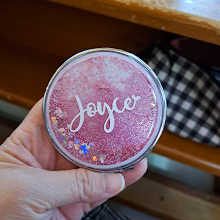 Photo source
Photo sourceThe discomfort associated with menstrual pain (also known as dysmenorrhea) range from cramps in the lower abdomen, diarrhea and frequent urination to sweating, bloating, nausea and vomiting. Mood swings, head and back aches, and upper thigh and back pain are also not unusual.
Source: Menstrual Cramps
What causes menstrual cramps?
1. Each month, the inner lining of the uterus (the endometrium) builds up in preparation for a possible pregnancy. After ovulation, if the egg is not fertilized by a sperm, no pregnancy will result and the current lining of the uterus is no longer needed.
2. The woman's estrogen and progesterone hormone levels decline, and the lining of the uterus becomes swollen and is eventually shed as the menstrual flow and is replaced by a new lining in the next monthly cycle.
3. When the old uterine lining begins to break down, molecular compounds called prostaglandins are released. These compounds cause the muscles of the uterus to contract.
4. When the uterine muscles contract, they constrict the blood supply (vasoconstriction) to the endometrium. This contraction blocks the delivery of oxygen to the tissue of the endometrium which, in turn, breaks down and dies.
5. After the death of this tissue, the uterine contractions literally squeeze the old endometrial tissue through the cervix and out of the body by way of the vagina.
6. Other substances known as leukotrienes, which are chemicals that play a role in the inflammatory response, are also elevated at this time and may be related to the development of menstrual cramps.
 Photo source
Photo sourceWhy are some cramps so painful?
1. Menstrual cramps are caused by the uterine contractions that occur in response to prostaglandins and other chemicals. The cramping sensation is intensified when clots or pieces of bloody tissue from the lining of the uterus pass through the cervix, especially if a woman's cervical canal is narrow.
2. The difference between menstrual cramps that are more painful and those that are less painful may be related to a woman's prostaglandin levels. Women with menstrual cramps have elevated levels of prostaglandins in the endometrium (uterine lining) when compared with women who do not experience cramps.
3. Menstrual cramps are very similar to those a pregnant woman experiences when she is given prostaglandin as a medication to induce labor.
 Photo source
Photo sourceSource: Guardian Pharmacy Leaflet
Two Types of Dysmenorrhea
Primary dysmenorrhea: Typically occurs in adolescents and usually begins 2 to 3 years following the first period. The cramps begin just before the onset of bleeding and usually stop within 2 or 3 days. They may persist throughout your 20s or until you deliver a child, after which, for unknown reasons, they're likely to decrease in intensity or go away entirely.
Secondary dysmenorrhea: Occurs mainly in women in their 30s or 40s and is attributed to some underlying causes such as endometriosis, fibroid or pelvic inflammatory disease. It can often be distinguished from primary dysmenorrhea by the fact that the pain usually continues for the duration of bleeding.
Relief for Cramps
1. Analgesics: If your cramps are too painful to ignore, try paracetamol or non-steroidal anti-inflammatory drugs as ibuprofen and mefenamic acid. Such medications work best when taken before and during your period.
2. Nutritional supplements: Some women find that nutritional supplements such as evening primrose oil, magnesium, calcium or Vitamins B6 help relieve their pain.
3. Exercise: It reduces discomfort.
4. Apply some heat: Warmth can often soothe cramps. Take a long, hot bath or place a hot water bottle or heating pad on your stomach.
5. Gently massage your lower abdomen.
6. Go easy on coffee: Taking in less caffeine does help some women feel better.
7. Get enough sleep: Dealing with discomfort is a lot easier when you're not tired and cranky.
I've blogged about remedies for menstrual cramps here. Here's the list of articles that I've compiled about menstrual cramps.
Interesting, right?
 Photo source
Photo sourceAnyway guys, here are some words of wisdom. Love your woman and try to understand that she has to go through some sort of discomfort EVERY month for a period that lasts up to 4 or 5 days.
Your understanding and support mean a lot to her, provided that she also does her part to find relief solutions that suit her best. :)


























No comments